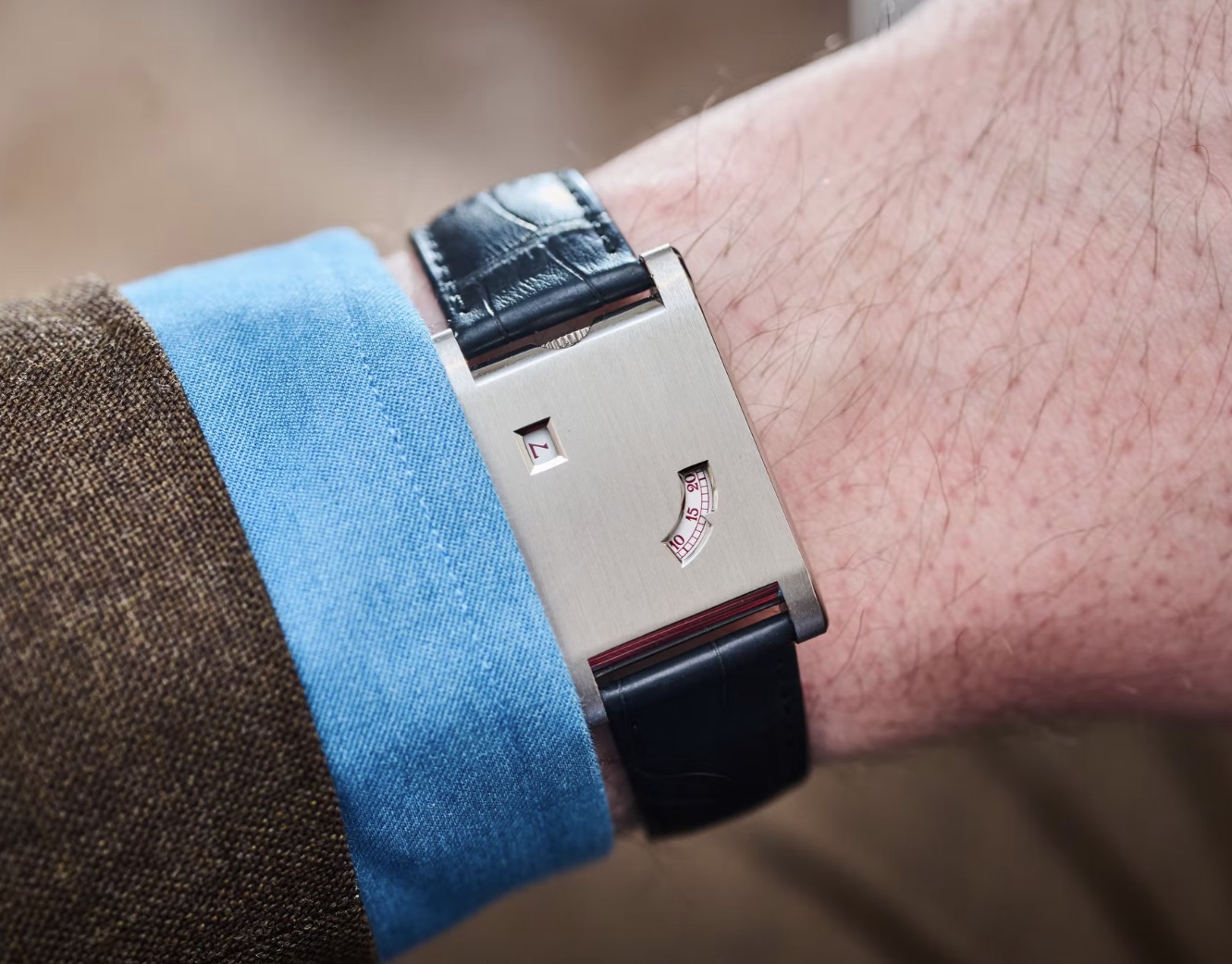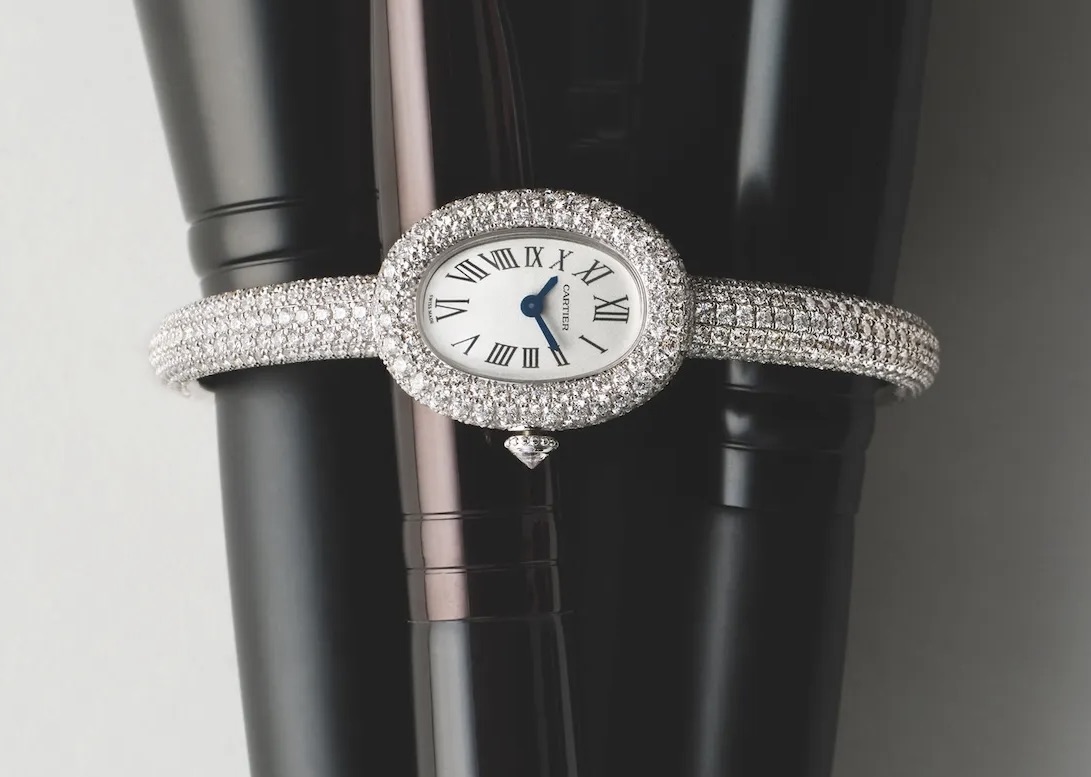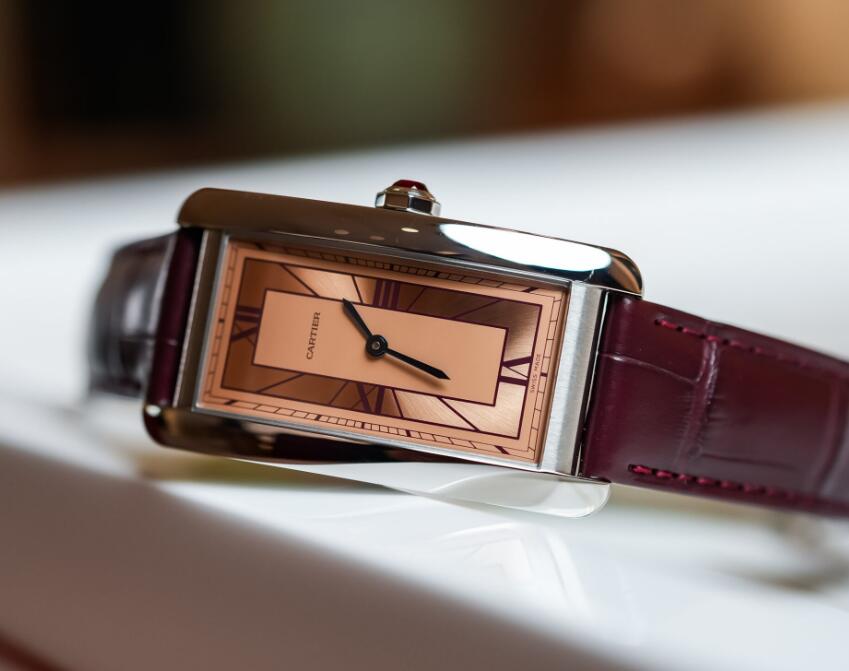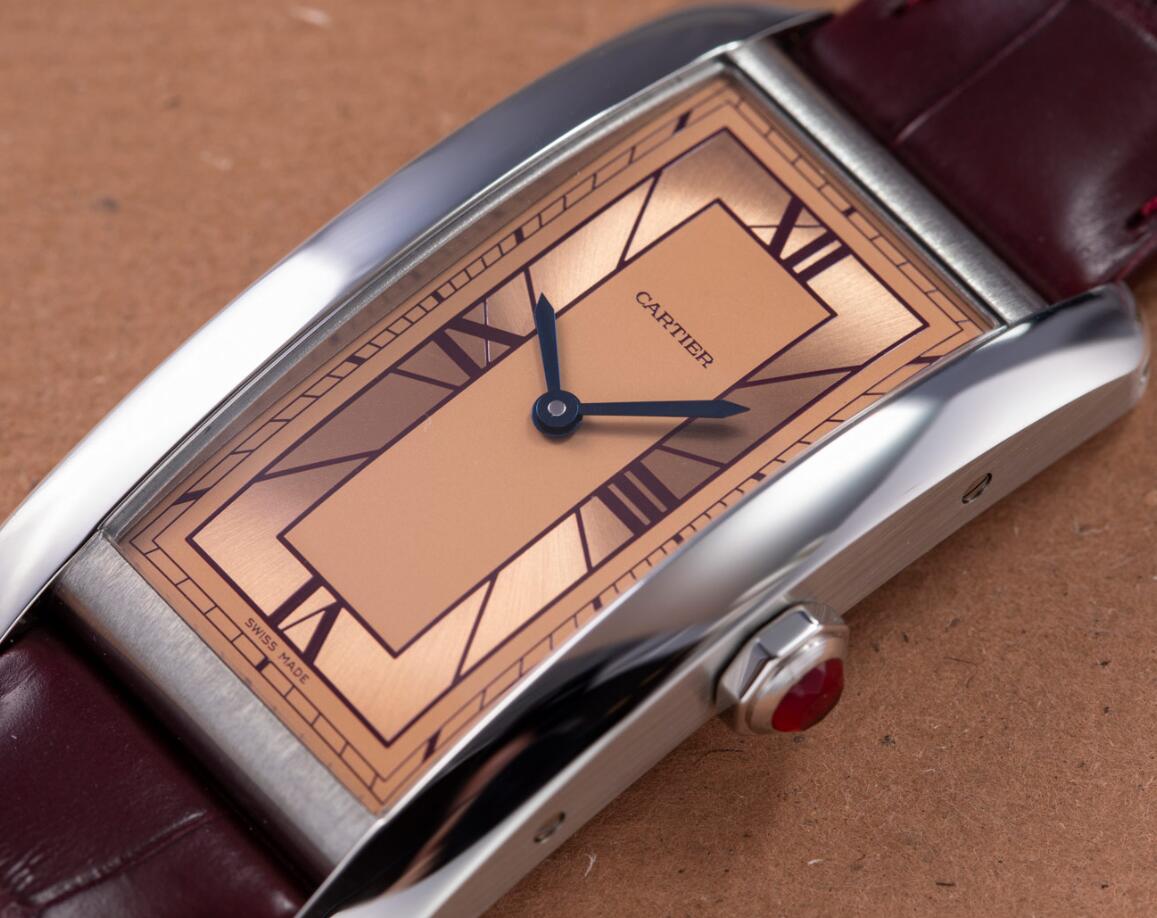It’s not something that every watch enthusiast would necessarily want to admit, but we have to thank Kanye West. Trends are tricky things to pin down, but his — seemingly quite random — decision in 2018 to post, in the words of one vintage-watch blog, “a crappy wrist shot” wearing gold luxury Cartier Crash super clone watches was, with hindsight, something of a turning point. Ye, unlike Jay-Z — who would soon be sporting a Crash of his own — has never been on record as a watch obsessive, so maybe his discovery of the Crash — the most recherché of all watch designs, the oddball of all oddballs — carried more weight. In 2019, he was spotted wearing the Swiss made Cartier replica watches — a Cartier “Paris” Crash, made in the 1990s — on My Next Guest Needs No Introduction With David Letterman. Cartier could hardly have orchestrated better publicity, as it had reintroduced the Crash in a back-to-basics gold version as a tribute to the reopening of its Bond Street boutique that very year.
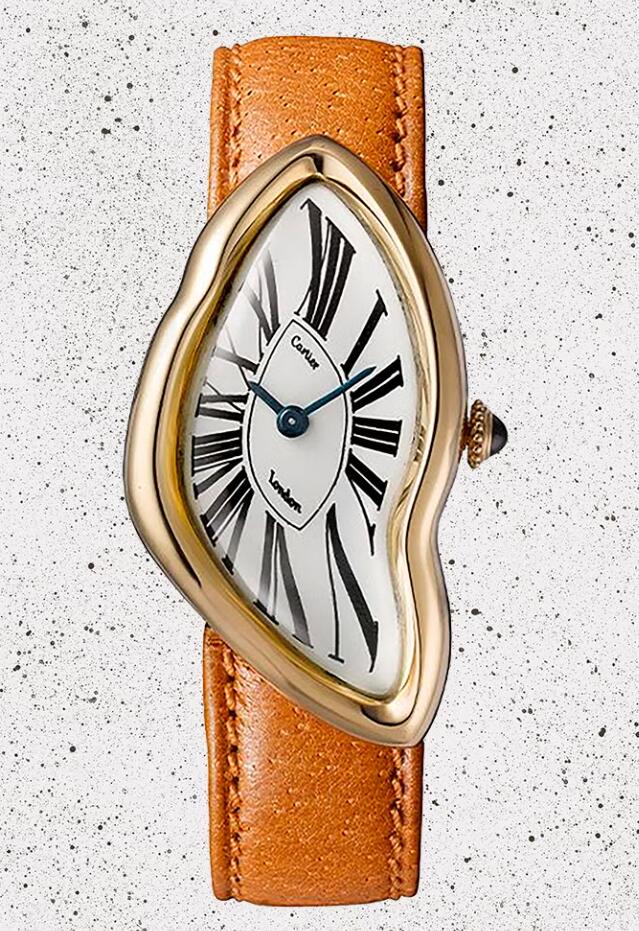
It wasn’t long before the Crash landed on other influential wrists. Kim Kardashian and Kris Jenner were seen with them, as was Timothée Chalamet. Rapper Bad Bunny wears one, as does Tyler, the Creator, who fell so hard for vintage UK perfect super clone Cartier watches that he turned up to rub shoulders with horology’s collector circle when Monaco Legend auction house hosted a sale dedicated to the brand in 2021. In the course of those two years, Cartier had gone from being an ever-present elder statesman whose image was only just emerging from a somewhat experimental era, to a maison once again on top of its game, beloved not only by casual watch shoppers picking up a Panthère for a graduation gift, but of Gen-Z superstars, menswear gurus and the real horological cognoscenti, vintage-watch dealers and collectors.
On the brand side, the turnaround can be largely attributed to former CEO Cyrille Vigneron, who took over in 2016 and immediately set about quietly dismantling the previous decade’s worth of adventures in high-end watchmaking and new designs. Vigneron reintroduced and revitalised legacy high quality fake Cartier watches such as the Santos and the Tank, before drip-feeding the market with limited-edition reissues of the Pebble, Tank Chinoise, Tank Asymétrique and this year’s Tonneau, in both chronograph and automatic forms. Then, in 2021, Cartier overtook Omega in the Morgan Stanley annual Swiss-watch report, to sit below only Rolex in the hierarchy of revenue and market share.
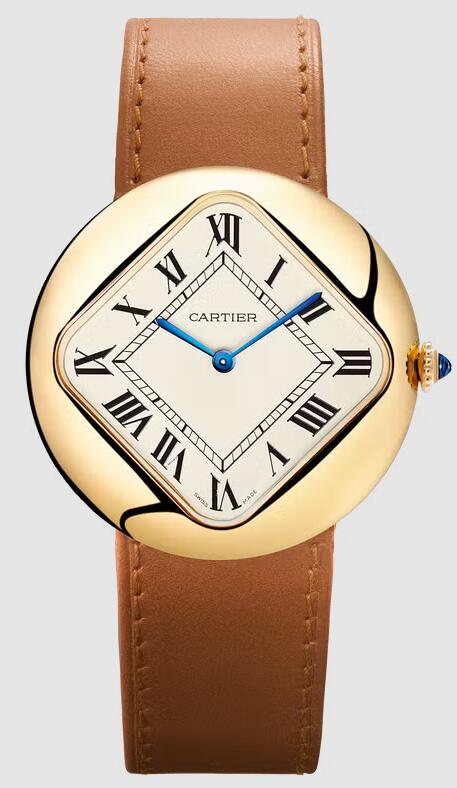
The picture in the vintage market is a bit more nuanced — although Vigneron’s stewardship certainly hit all the right notes for a brand eager to elevate its back catalogue. There were some standout moments: the aforementioned sale at Monaco Legend; a record-setting Crash auction sale price on start-up site Loupe This; an original 1972 Pebble that hammered at Phillips in 2021 for around £361,000; and the serendipitous emergence of the semi-mythical and long-lost Cartier Cheich, an extremely rare model that was produced as a prize for the winner of the Paris-Dakar endurance rally. The 1:1 Cartier super clone watches UK was bought by none other than Eric Ku, giving him the distinction of being the only person to both buy and sell a Cartier at auction for more than a million dollars.
One consequence of this turbocharged rise has been a renewed interest in Cartier’s watchmaking history, and in particular the importance of its London heritage. While the name itself is Parisian, and today its Cartier copy watches online all come from a state-of-the-art manufacture in the Swiss city of La Chaux-de-Fonds, Cartier’s horological reputation owes much to the brand’s presence in our own fair capital; without it, designs such as the Crash, Pebble, Maxi Oval, now seen as absolutely integral to the brand, would not exist.
Originally established in 1902 at 4 New Burlington Street — now the site of a contemporary art gallery — Cartier moved to its current New Bond Street home seven years later. In 1906, Jacques Cartier, grandson of founder Louis-François Cartier, upon being given responsibility for the London branch of Cartier, remarked in a letter that there was “an almost palpable sense of satisfaction that the state of the country was, if not perfect, then as near to that as God could make it”.
With half a century of business under its belt, super clone Cartier watches for sale sensed the moment for international expansion, and the decision was taken to place three brothers — Jacques, and his older siblings Louis and Pierre — in charge of three quasi-independent firms. As Francesca Cartier Brickell explains in her 2019 book, The Cartiers: The Untold Story Of The Family Behind The Jewelry Empire, as the eldest boy, Louis laid claim to Cartier Paris, the ancestral home of the company, while Pierre was given Cartier New York. “Jacques was given England, which may not sound like much, but it also included the British colonies. And India was particularly important when it came to gems,” she writes.
Over the next three decades, Jacques Cartier built his London outpost into a pillar of British high society; it acquired its Royal Warrant in 1904 and took pride in catering to both the local aristocracy and the ruling elite across the British Empire. “His contribution was very much as a traveller on behalf of the maison,” says Cartier’s London-based archivist, Jenny Rourke. “There’s this spirit of international influence running through London’s creations almost from the very beginning and certainly by the 1920s, which went hand in hand with an awareness on Jacques’ part towards the British clientele.”
Jacques passed away in 1941 at the age of 57, and control of Cartier London passed to his son, Jean-Jacques Cartier. He was the one to really take Cartier’s watchmaking to the next level. As Rourke says, “The Cartier story until the 1950s is very much about the Tank, the Tonneau and the Baignoire eventually, which are coming out of Paris, and they’re very much Louis Cartier’s legacy. But then in London, Jean-Jacques Cartier contributed to this little flurry of interest in watchmaking, and this is where the Crash, the Maxi Oval, the Pebble and all those other London models come through.”
The critical point to grasp in order to understand Cartier’s 20th-century history — and by extension, understand vintage cheap replica Cartier watches as a whole — is the degree of autonomy enjoyed by the New York, London and Paris outposts. It stems from the product as much as the organisational structure; so much of the jewellery created was bespoke, and tailored to the tastes and styles of each market, and this was reflected in the advertising and so on. Watch faces would bear their city of origin, “Cartier London”. “They operated independently up to a point, but there was this feeling that the Cartier style was a universal style,” explains Rourke. “Each of the brothers maintained photography studios within the premises, so that there was this opportunity to capture what was being created to exchange across the three temples.”
The local autonomy also stemmed from the fact that each “temple”, as Cartier likes to call them, was more than a retail store; they were home to full-scale artisanal workshops. The top UK Cartier super clone watches would use movements from Jaeger-LeCoultre, which arrived fully assembled from Switzerland, but the cases, dials, straps and buckles were all designed and made in London, either on New Bond Street or outsourced to a subsidiary workshop by the name of Wright & Davies, on Rosebery Avenue. As a result, Cartier’s watches of the 1960s and 1970s have an artisanal quality to them — as Eric Ku has explained, “Each watch was made by hand. If somebody ordered a Crash, they would make it to order. You could have two Tank Normale’s that were made by Cartier London on different days, and they would be slightly different. If you took the deployant bracelet clasp apart, for example, there’s a good chance that the two blades wouldn’t be interchangeable.”
Cartier Brickell’s book details how the workshop used to function, with eight craftsmen working in the nondescript building (its location was deliberately obscured to avoid robberies) and one leatherworker in an adjacent room; the templates for each design were stored in old tobacco tins and briefcases of finished components ferried to New Bond Street on the bus. An ordinary watch case would take 35 to 40 hours to make. Volumes were limited in the name of luxury and by the operation’s scale; according to data collated by vintage-watch dealer Marcus Siems, worldwide production figures for Cartier between 1919 and 1960 totalled 13,659, and even once things accelerated in the 1960s, rarely exceeded 1,500 best quality Cartier fake watches a year.
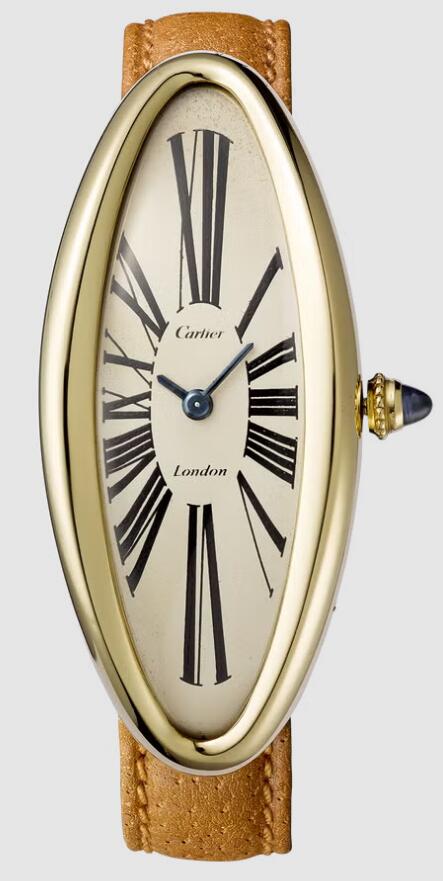
Under Jean-Jacques Cartier — with the help of designer Rupert Emmerson — Cartier London started producing the Maxi Oval (also known as the Baignoire Allongée) in 1964, and in 1972 came the Swiss made Cartier Pebble super clone watches, the perfectly round watch with a diamond-shaped dial, of which only six were made. But it is the Crash, created in 1967, that epitomises Cartier London and which will forever be its lasting contribution to the watch world. One of watchmaking’s unkillable myths is the idea that the Crash derived from a Maxi Oval that had been damaged in a car accident. This rather macabre version of events is inaccurate — Emmerson and Cartier simply set out to imagine what that might look like. It was a painstaking creation; once the eye-catching case shape had finally been settled upon, Emmerson had to repaint the dial multiple times before he could get the numerals to actually line up with the correct time.
The Crash showcased Cartier’s ability to evolve, and react to demand from the new clientele it was attracting in the swinging 60s. “The only reason that Jean-Jacques was able to play with the idea of replica Cartier watches shop was because that idea was already so well cemented into the psyche of the client,” says Rourke. “If you’re twisting that icon into something new but still recognisable, you’re playing on something that they already have in their minds.” The story goes that some of Cartier’s loyal customers, including the actor Stewart Granger, demanded “a watch like no other”, according to Cartier Brickell.
“Cartier London was the more adventurous of the three branches,” says Tom Heap, deputy director at Sotheby’s in London. “They were producing some really fun and exciting stuff. If you look at the ads they were doing at the time, they were fantastic photo shoots in Vogue; The Beatles and The Rolling Stones were both into Cartier, Sharon Tate had a big Baignoire. It was like Cartier London was the edgy brother of the group.”
It was so edgy, however, that it wasn’t an easy sell at first. Granger apparently returned his after a week, deciding he’d rather have something more conventional after all. Only around a dozen Crashes were made under Jean-Jacques Cartier, although production continued in the 1970s. “There was a second series, which had a slightly different dial,” says Heap, “and I think there was an overlap where they changed the shape of the case so it became pointier. And then you had a third series, which had a more elaborate font and a bigger Cartier print — I call them the Tim Burton dials because they’re so elaborate.”
In today’s market, it’s not hard to see why Cartier London’s watches have captivated collectors — Kanye may have helped to kick-start by, and there certainly aren’t forums full of Cartier nerds dissecting minuscule details like there are for Rolex fans, but the super clone Cartier watches paypal are rare, artisanal, distinctive, associated with a significant time and place in pop culture, and come from a world-famous brand. Horological commentators have been heralding the age of vintage Cartier for a while now, but Heap says the best could be yet to come. “At auction, Cartier London will often do multiples of what comparable houses might.
The collecting community for Cartier really likes the intrigue of having to research it without much [information] there; there’s this element of, ‘Where are all these, the lost kind of Cartier Crashes?’ Because we’ve only seen a handful of the older ones. There has been a softening of the vintage market in general, but with Cartier, it’s hard to saturate such a finite market.”
